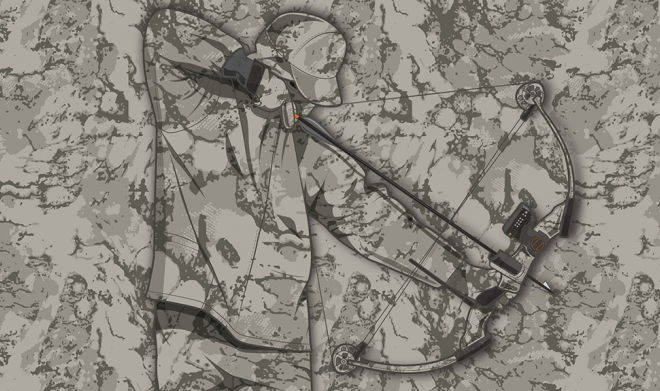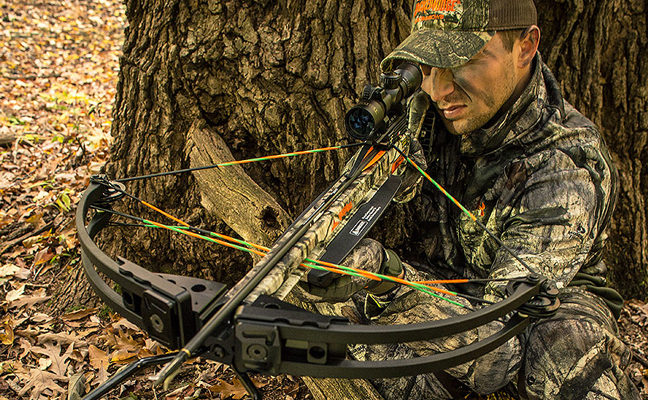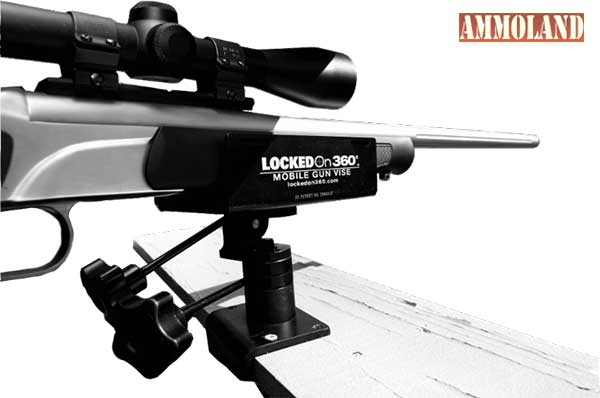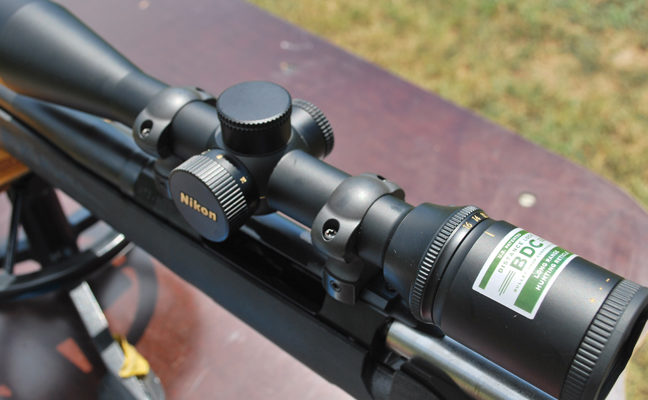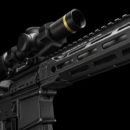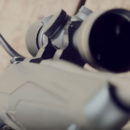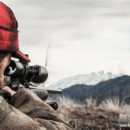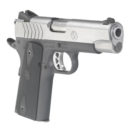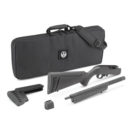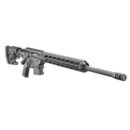The Benefits of Electronic Hearing Protection
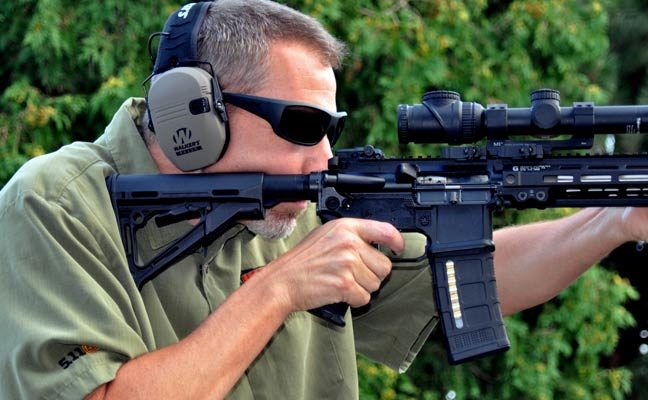
by James Tarr
Technology has progressed at an amazing pace in the last few decades, but the shooting world hasn’t been left behind in this digital age—modern technology has brought electronic hearing protection to the general shooting public at an affordable price.
However, many avid shooters don’t understand exactly how electronic hearing protection works or why they should buy it.
The great thing about slim electronic ear pro, like these Walker’s Razors, is that they can still be used when shooting rifles, as the cups don’t interfere with a proper cheek weld.
I am no true believer—I was in my 40s before I ever put on a pair of electronic muffs, but now I kick myself that it took me so long to take advantage of what is a real game-changer. Electronic hearing protection is most commonly seen in the form of over-the-ear muffs, so let’s look at them first.
All About Muffs
Standard non-electronic muffs are called “passive” hearing protection. The cups around a shooter’s ears are filled with sound-absorbing foam, which slows down/muffles/reduces the incoming sound waves so gunshots and other loud sounds are no longer a threat to their hearing.
As a result, however, it is harder to hear sounds at ordinary volume levels. I can always tell who at the range is wearing passive muffs, because they’re shouting in order to have a “normal” conversation. FYI, if you don’t wear some sort of hearing protection while shooting, people will soon have to shout at you all the time.
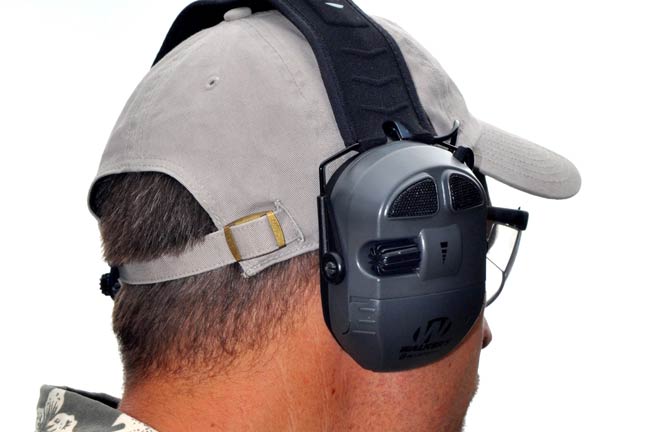
These Walker’s Ultimate Quad Connect muffs have four microphones, independent volume control, and a number of other features….but as a result they’re a bit blocky, and maybe not the best choice when shooting a rifle as they may interfere with your cheek weld.
Earmuffs for electronic hearing protection have standard ear cups with sound-absorbing foam just like in passive muffs, so if a battery dies, a shooter’s hearing will still be protected. Where they differ from passive muffs is the microphones on the outside of the muffs, which pick up sounds, amplify them and deliver them to a shooter’s ears electronically.
With the volume control turned all the way up, I’ve found electronic muffs allow me to hear better than I can with my bare ears—which is why many hunters wear them in the field. And yes, firing only a few rounds a year without electronic hearing protection while hunting can still irreparably damage anyone’s hearing.
Early electronic ear muffs (and modern inexpensive ones) feature a “stop gate.” If the muffs sense a loud sound above a certain decibel level, the amplifier simply shuts off. When the sound stops, the amplifier turns back on.
This works, but the resulting audio experience to the shooter’s ear can be a bit clipped. If someone nearby is shooting a lot while shooters are trying to have a conversation, it will sound like their muffs are shutting on and off. These older/cheaper muffs also usually only had one microphone, and it was tough to tell the direction from which the sound was coming.
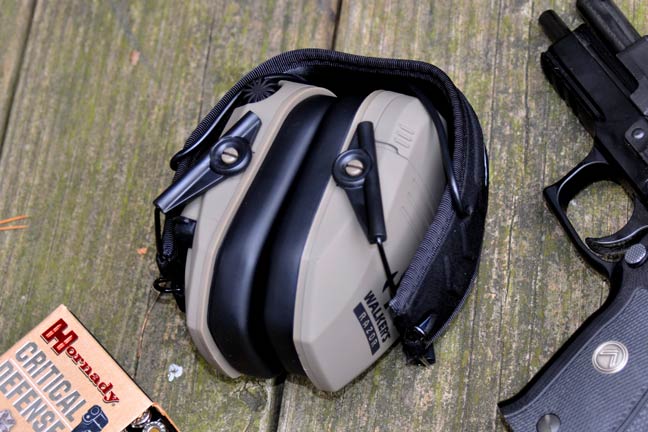
Convenience is important, and being able to fold up your ears so they fit in your range bag is a nice bonus.
Most modern models of electronic hearing protection feature the latest amplifier technology, which offers “sound compression.” This lets shooters hear all of the low-level environmental sounds going on around them, including conversation, footsteps, even the wind, but when a loud sound, like gunshots, occurs, the sound is not cut off but rather compressed into a lower volume. The sound is essentially continuous as opposed to cutting in and out.
One great advantage of electronic hearing protection is that shooters won’t have to pull their muff away and expose their ears to have a conversation. As soon as they do that, someone nearby is likely to start shooting unexpectedly, and they’ll be jerking their muff back into place. I’ve seen that happen dozens of times.
Modern electronic hearing protection also usually features more than one microphone (one on each muff) so it is easier to determine the direction the sound is coming from. This is very important if shooters are wearing electronic hearing protection when hunting or in a tactical environment. Most electronic muffs seem to be powered by widely available and inexpensive AAA batteries, which last for hundreds of hours.
For a look at all the technological advancements electronic muffs offer compared to passive muffs, check out the specs on the “Ultimate Series” from Walker’s. These electronic muffs feature four hi-gain omni-directional microphones, 9x hearing enhancement, two independent volume controls, sound-dampening composite material, which contributes to the highest (27dB) noise reduction rating for any muff under $300 and sound activated compression. They’re also available in Mossy Oak and Realtree camo patterns for hunters.
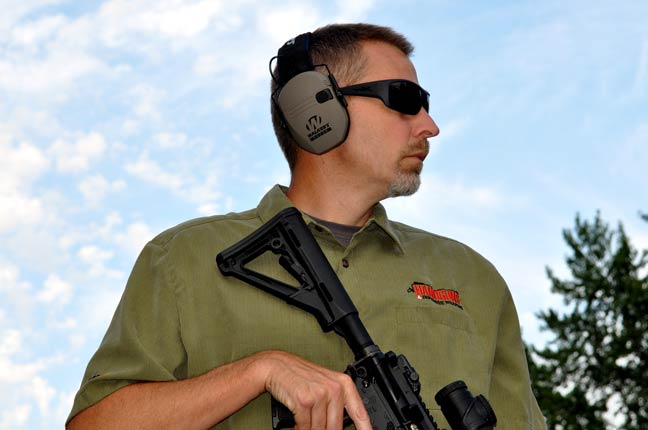
The great thing about slim electronic ear pro, like these Walker’s Razors, is that they can still be used when shooting rifles, as the cups don’t interfere with a proper cheek weld.
However….there’s no such thing as a free lunch. Muffs big enough to have all of the above features can be a bit blocky, not to mention expensive. Blocky doesn’t matter when shooting a handgun, but most people don’t want their muffs getting in the way when they have to put a cheek on a rifle stock. Also, these big, full-featured muffs just aren’t as convenient for storage/transport.
With modern advancements it is now possible to make very slim electronic muffs that still provide excellent electronic hearing protection. Walker’s has a new line of slim folding muffs called the Razor Series. Two omni-directional microphones, HD sound output with independent volume controls, sound activated compression, 23dB noise reduction rating…and a suggested retail price of only $69.99! Isn’t technological advancement awesome?
Earplug Technology
If electronic muffs are so great, why was I in my 40s before I tried a pair? Simply because nothing is perfect for everyone all the time. I live in Michigan, which means if it’s warm enough to shoot outside it is probably hot and humid—and the last thing I wanted to do on a hot and humid day was clamp a pair of earmuffs on my head. So I was an earplug guy for years, and still prefer them if I’m shooting where it’s hot.
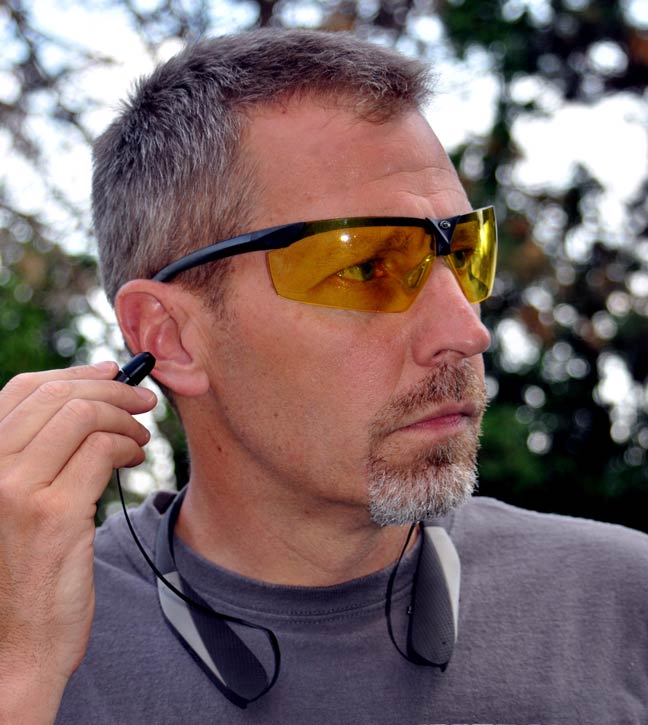
Razor XV electronic hearing protection from Walker’s offers an incredible 31 dB noise reduction due to their dense foam tips.
Earplugs are fine if shooters are outdoors, away from other people, but if they’re on a line with many rifles or shooting anything indoors or in an enclosed space, plugs usually don’t provide enough hearing protection.
Muffs alone might not, either. However, if shooters wear electronic hearing protection over plugs (I’ve seen that combo quite often, especially in really loud environments) and turn the muffs all the way up, they can still have a normal conversation while enjoying nearly double the noise reduction of just plugs or muffs alone. That may seem like overkill….but there is no such thing as too much hearing protection.
One thing shooters may not realize is that earplug technology has improved along with earmuff technology. For a while now, I’ve been seeing young people listening to music on retractable earbuds attached to a half halo (for lack of a better term) that sits around their neck. Being out of my teens I’m often a little slow to grasp emerging tech, and wasn’t sure what I was looking at, but a little research recently showed me what these were—Bluetooth-enabled earbud headsets.
I also learned there were versions designed for shooters. Yes, you read that right, there are now electronic earbuds, which perform similarly to electronic muffs, with omni-directional microphones, sound activated compression, etc. Who knew?

Electronic earbuds for the shooting sports have arrived. Walker’s Razor XV (shown here) are Bluetooth enabled so you can take phone calls or listen to music without removing your ear protection.
In researching these earbud headsets, I have to admit I was shocked at their features. For example, the Razor XV model from Walker’s offers a noise reduction rating of 31 dB! That’s incredible, and better than most muffs.
That kind of sound abatement is apparently possible through the use of dense noise reducing foam tips. These top-of-the-line earbuds also offer a Bluetooth connection, so shooters can answer a phone call without removing their headphones.
These earbuds also have an independent volume control, so shooters can listen to music without having to worry about missing any range commands. The speakers in the earbuds are made in the same factory that makes Bose speakers, so the sound quality is excellent.
Thanks to modern technology and electronic hearing protection, there’s never been a better time to enjoy shooting while protecting hearing.

